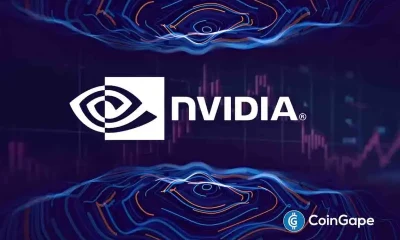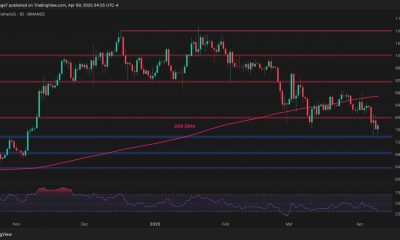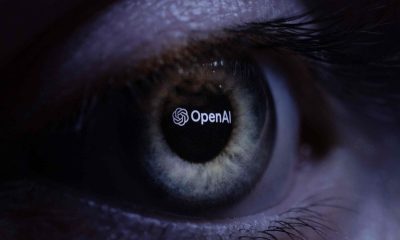

Metaverse
AI models make stuff up. How can hallucinations be controlled? – Crypto News
There are kinder ways to put it. In its instructions to users, OpenAI warns that ChatGPT “can make mistakes”. Anthropic, an American AI company, says that its LLM Claude “may display incorrect or harmful information”; Google’s Gemini warns users to “double-check its responses”. The throughline is this: no matter how fluent and confident AI-generated text sounds, it still cannot be trusted.
Hallucinations make it hard to rely on AI systems in the real world. Mistakes in news-generating algorithms can spread misinformation. Image generators can produce art that infringes on copyright, even when told not to. Customer-service chatbots can promise refunds they shouldn’t. (In 2022 Air Canada’s chatbot concocted a bereavement policy, and this February a Canadian court has confirmed that the airline must foot the bill.) And hallucinations in AI systems that are used for diagnosis or prescription can kill.
All the leaves are brown
The trouble is that the same abilities that allow models to hallucinate are also what make them so useful. For one, LLMs are a form of “generative” AI, which, taken literally, means they make things up to solve new problems. They do this by producing probability distributions for chunks of characters, or tokens, laying out how likely it is for each possible token in its vocabulary to come next. The mathematics dictate that each token must have a non-zero chance of being chosen, giving the model flexibility to learn new patterns, as well as the capacity to generate statements that are incorrect. The fundamental problem is that language models are probabilistic, while truth is not.
This tension manifests itself in a number of ways. One is that LLMs are not built to have perfect recall in the way a search engine or encyclopedia might. Instead, because the size of a model is much smaller than the size of its training data, it learns by compressing. The model becomes a blurry picture of its training data, retaining key features but at much lower resolution. Some facts resist blurring—“Paris”, for example, may always be the highest-probability token following the words “The capital of France is”. But many more facts that are less statistically obvious may be smudged away.
Further distortions are possible when a pretrained LLM is “fine-tuned”. This is a later stage of training in which the model’s weights, which encode statistical relationships between the words and phrases in the training data, are updated for a specific task. Hallucinations can increase if the LLM is fine-tuned, for example, on transcripts of conversations, because the model might make things up to try to be interesting, just as a chatty human might. (Simply including fine-tuning examples where the model says “I don’t know” seems to keep hallucination levels down.)
Tinkering with a model’s weights can reduce hallucinations. One method involves creating a deliberately flawed model trained on data that contradict the prompt or contain information it lacks. Researchers can then subtract the weights of the flawed model, which are in part responsible for its output, from those of the original to create a model which hallucinates less.
It is also possible to change a model’s “temperature”. Lower temperatures make a model more conservative, encouraging it to sample the most likely word. Higher temperatures make it more creative, by increasing the randomness of this selection. If the goal is to reduce hallucinations, the temperature should be set to zero. Another trick is to limit the choice to the top-ranked tokens alone. This reduces the likelihood of poor responses, while also allowing for some randomness and, therefore, variety.
Clever prompting can also reduce hallucinations. Researchers at Google DeepMind found that telling an LLM to “take a deep breath and work on this problem step-by-step” reduced hallucinations and improved problem solving, especially of maths problems. One theory for why this works is that AI models learn patterns. By breaking a problem down into smaller ones, it is more likely that the model will be able to recognise and apply the right one. But, says Edoardo Ponti at the University of Edinburgh, such prompt engineering amounts to treating a symptom, rather than curing the disease.
Perhaps, then, the problem is that accuracy is too much to ask of LLMs alone. Instead, they should be part of a larger system—an engine, rather than the whole car. One solution is retrieval augmented generation (RAG), which splits the job of the AI model into two parts: retrieval and generation. Once a prompt is received, a retriever model bustles around an external source of information, like a newspaper archive, to extract relevant contextual information. This is fed to the generator model alongside the original prompt, prefaced with instructions not to rely on prior knowledge. The generator then acts like a normal LLM and answers. This reduces hallucinations by letting the LLM play to its strengths—summarising and paraphrasing rather than researching. Other external tools, from calculators to search engines, can also be bolted onto an LLM in this way, effectively building it a support system to enhance those skills it lacks.
Even with the best algorithmic and architectural antipsychotics available, however, LLMs still hallucinate. One leaderboard, run by Vectara, an American software company, tracks how often such errors arise. Its data shows that GPT-4 still hallucinates in 3% of its summaries, Claude 2 in 8.5% and Gemini Pro in 4.8%. This has prompted programmers to try detecting, rather than preventing, hallucinations. One clue that a hallucination is under way lies in how an LLM picks words. If the probability distribution of the words is flat, ie many words have similar likelihoods of being chosen, this means that there is less certainty as to which is most likely. That is a clue that it might be guessing, rather than using information it has been prompted with and therefore “knows” to be true.
Another way to detect hallucination is to train a second LLM to fact-check the first. The fact-checker can be given the “ground truth” along with the LLM’s response, and asked whether or not they agree. Alternatively, the fact-checker can be given several versions of the LLM’s answer to the same question, and asked whether they are all consistent. If not, it is more likely to be a hallucination. NVIDIA, a chipmaker, has developed an open-source framework for building guardrails that sit around an LLM to make it more reliable. One of these aims to prevent hallucinations by deploying this fact-checking when needed.
Although such approaches can decrease the hallucination rate, says Ece Kamar, head of the AI frontiers lab at Microsoft, “it is unclear whether any of these techniques is going to completely get rid of hallucinations.” In many cases, that would be akin to self-sabotage. If an LLM is asked to generate ideas for a fantasy novel, for example, its output would be disappointing if limited to the world as it is. Consequently, says Dr Kamar, her research aims not to get rid of all hallucinations, but rather to stop the model from hallucinating when it would be unhelpful.
Safe and warm
The hallucination problem is one facet of the larger “alignment” problem in the field of AI: how do you get AI systems to reliably do what their human users intend and nothing else? Many researchers believe the answer will come in training bigger LLMs on more and better data. Others believe that LLMs, as generative and probabilistic models, will never be completely rid of unwanted hallucinations.
Or, the real problem might be not with the models but with its human users. Producing language used to be a uniquely human capability. LLMs’ convincing textual outputs make it all too easy to anthropomorphise them, to assume that LLMs also operate, reason and understand like humans do. There is still no conclusive evidence that this is the case. LLMs do not learn self-consistent models of the world. And even as models improve and the outputs become more aligned with what humans produce and expect, it is not clear that the insides will become any more human. Any successful real-world deployment of these models will probably require training humans how to use and view AI models as much as it will require training the models themselves.
Curious about the world? To enjoy our mind-expanding science coverage, sign up to Simply Science, our weekly subscriber-only newsletter.
© 2023, The Economist Newspaper Limited. All rights reserved. From The Economist, published under licence. The original content can be found on www.economist.com
-

 Blockchain7 days ago
Blockchain7 days agoThe CFO and Treasurer’s Guide to Digital Assets – Crypto News
-

 Cryptocurrency1 week ago
Cryptocurrency1 week agoFamous Crypto Analyst Advises to Sell NVIDIA Stock: Here’s Why – Crypto News
-

 Business1 week ago
Business1 week agoBinance Enables Apple & Google Pay Features With This Latest Partnership – Crypto News
-

 Cryptocurrency1 week ago
Cryptocurrency1 week agoTariffs Are Just the Tip of the Iceberg, Warns Billionaire Investor Ray Dalio – Crypto News
-

 Cryptocurrency1 week ago
Cryptocurrency1 week agoBitMEX Study Reveals Exchange-Specific Price Trends for Perpetual Swaps Across Leading Exchanges – Crypto News
-

 Technology1 week ago
Technology1 week agoApple could give iPhone a radical makeover for its 20th anniversary, report says – Crypto News
-

 Business1 week ago
Business1 week agoWill Dogecoin Price Ever Reach $1? Top Analysts Weigh In – Crypto News
-

 Cryptocurrency1 week ago
Cryptocurrency1 week agoDire Wolf Solana Meme Coin Soars to $13.6M Market Cap After ‘De-Extinction’ – Crypto News
-

 Technology1 week ago
Technology1 week agoApple exported iPhones worth ₹1.5 trillion from India in FY25: Union Minister Ashwini Vaishnaw – Crypto News
-

 others1 week ago
others1 week agoJohn Deaton Highlights Ripple’s Journey from Legal Struggle To ETF Launches – Crypto News
-

 Technology1 week ago
Technology1 week agoCan It Take The Baton And Initiate The Next Altcoin Rally As The Market Strengthens? – Crypto News
-

 Cryptocurrency1 week ago
Cryptocurrency1 week agoThe Downside Prevails As Cardano Price Rejected at $0.60 – Crypto News
-

 Cryptocurrency1 week ago
Cryptocurrency1 week agoDogecoin hits multi-month low, but is a market reset on the way? – Crypto News
-

 Technology1 week ago
Technology1 week agoMusks DOGE using AI to snoop on U.S. federal workers, sources say – Crypto News
-

 Cryptocurrency1 week ago
Cryptocurrency1 week agoETH Hits 2-Year Low as BTC, XRP Hold Support – Crypto News
-

 Cryptocurrency1 week ago
Cryptocurrency1 week agoPeter Schiff Cautions US Against Trade War Escalation With China – Crypto News
-

 Blockchain6 days ago
Blockchain6 days agoHow to mine Bitcoin at home in 2025: A realistic guide – Crypto News
-

 Technology1 week ago
Technology1 week agoiPad Air M3 (2025) Review: Still the most practical iPad – Crypto News
-

 Business1 week ago
Business1 week agoCathie Wood’s Ark Invest Loads $13 Million of Coinbase Stock, COIN Price Reversal Soon? – Crypto News
-

 others1 week ago
others1 week agoAustralia Shuts Over 90 Companies Linked To Pig Butchering Schemes – Crypto News
-

 Business1 week ago
Business1 week ago“Perfect Time to Buy” – Patterns Point to a Pepe Coin Price Resurgence – Crypto News
-

 Cryptocurrency1 week ago
Cryptocurrency1 week agoBitcoin is highly correlated with stock market since August 2024 – Crypto News
-

 Business1 week ago
Business1 week agoSui Price Recovers As CBOE Files To List SUI ETF – Crypto News
-

 Technology6 days ago
Technology6 days agoMicrosoft’s Greatest Hits and Epic Fails: A 50-Year Wild Ride – Crypto News
-

 Blockchain1 week ago
Blockchain1 week agoCardano (ADA) Eyes Resistance Break—Failure Could Spark Fresh Losses – Crypto News
-

 Technology1 week ago
Technology1 week agoPumpFun Livestream Feature Is Back — But What’s Changed? – Crypto News
-

 Business1 week ago
Business1 week agoIs Ripple Hinting at Cardano Partnership? – Crypto News
-

 Blockchain1 week ago
Blockchain1 week agoCathie Wood’s ARK bags $26M in Coinbase shares, unloads Bitcoin ETF – Crypto News
-

 Technology1 week ago
Technology1 week agoChina Retaliates, Triggering a Dead Cat Bounce in Crypto – Crypto News
-

 Business1 week ago
Business1 week agoSolana Unveils Confidential Balances Token Extension – Crypto News
-

 others1 week ago
others1 week agoTop 3 Reasons XRP Price May Surge as Analyst Delivers a $693 Billion Prediction – Crypto News
-

 Cryptocurrency1 week ago
Cryptocurrency1 week agoBTC Risks Further Downside if it Fails to Reclaim This Resistance – Crypto News
-

 Cryptocurrency1 week ago
Cryptocurrency1 week agoOpenAI Countersues Elon Musk, Accuses Billionaire of ‘Bad-Faith Tactics’ – Crypto News
-

 Blockchain6 days ago
Blockchain6 days agoBTC, ETH, XRP, BNB, SOL, DOGE, ADA, LEO, LINK, AVAX – Crypto News
-

 Technology6 days ago
Technology6 days agoDogecoin Price Gearing for A 3X Rally Amid DOGE Whale Accumulation – Crypto News
-

 others5 days ago
others5 days agoBinance Issues Important Update On 10 Crypto, Here’s All – Crypto News
-

 others1 week ago
others1 week agoWTI price mostly unchanged at European opening – Crypto News
-

 others1 week ago
others1 week agoTechnical Indicator Suggesting Bitcoin (BTC) Bull Market Hasn’t Started Yet: Quant Analyst PlanB – Crypto News
-

 others1 week ago
others1 week agoGold price under pressure despite high risk aversion – Commerzbank – Crypto News
-

 Technology1 week ago
Technology1 week agoShiba Inu Price Risks 50% Crash As Bearish Breakout Looms – Crypto News
-

 Blockchain1 week ago
Blockchain1 week agoWeb3 active developers drop nearly 40% in one year – Crypto News
-

 Blockchain1 week ago
Blockchain1 week agoXRP Down, But History Says Millionaires Were Made This Way – Crypto News
-

 others1 week ago
others1 week agoEconomist Alex Krüger Warns US Stocks Could Repeat 2008 Bear Market Amid Trump’s Trade War – Crypto News
-

 Technology1 week ago
Technology1 week agoXRP Leveraged ETF Outshines Solana At Launch – Crypto News
-

 Cryptocurrency1 week ago
Cryptocurrency1 week agoStablecoin infrastructure platform M^0 expands to Solana – Crypto News
-
Blockchain1 week ago
Investors Looking To Buy Bitcoin? – Crypto News
-

 Cryptocurrency1 week ago
Cryptocurrency1 week agoGalaxy’s imminent US listing reflects SEC change – Crypto News
-

 others1 week ago
others1 week agoCrypto Products See $240,000,000 in Outflows Likely in Response to US Tariff Threats: CoinShares – Crypto News
-

 Blockchain7 days ago
Blockchain7 days agoNY attorney general urges Congress to keep pensions crypto-free — ‘No intrinsic value’ – Crypto News
-

 Technology7 days ago
Technology7 days agoiQOO Z10 5G, Z10x 5G launched in India, price starts at ₹13,499. Check full price, specs and more – Crypto News
















